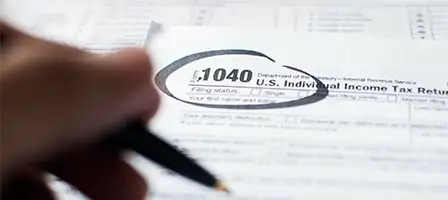The Importance of the October 15 Deadline
If you filed for a personal tax extension this year, your absolute last chance to submit your federal income tax return is October 15 deadline, 2025. This deadline is important because it is the final day the IRS allows you to file your complete tax return without facing failure-to-file penalties.
Remember, while the extension grants extra time to file your paperwork, it does NOT extend the time to pay any taxes owed, which were still due by the original April 15 deadline. Filing on or before October 15 means you can avoid penalties that could amount to up to 25% of the tax due and potentially maximize valuable tax credits and deductions related to your income tax return.
Whether you’re preparing a simple form return or managing business tax filings, meeting this deadline is essential to stay compliant and protect your financial interests for the tax year 2024. Use this extension period wisely to gather all your income statements, review estimated tax payments you may have made, and ensure your tax payment and filing are complete by this critical date.
Gather Your Documentation
Personal Information
Before you file your tax return by the October 15 extension deadline, make sure you have all your essential personal information ready. This includes Social Security numbers or tax ID numbers for yourself, your spouse, and any dependents. Having last year’s tax return on hand can be very helpful for reference and can streamline your tax preparation.
Additionally, keep your government-issued photo ID and bank account details ready for direct deposit of any refund or electronic payment of taxes owed.
Income Reports
Collect all income reports that apply to you, such as Form W-2s for wages, Form 1099s for various types of income like dividends (1099-DIV), interest (1099-INT, 1099-OID), retirement distributions (1099-R), and other income sources. If you have investment income or sold assets, gather documents like 1099-B and Schedule K-1s from partnerships or trusts.
Don’t forget any income statements from freelance or side jobs, including payments processed through apps or payment networks.
Tax Deductions and Credits
To maximize your tax benefits, gather documentation related to tax deductions and credits. This can include records of mortgage interest and property taxes if you itemize deductions, charitable donation receipts, childcare expenses, and educational costs if applicable.
Keep track of health savings account contributions, medical expenses, and retirement plan contributions. Also, have documentation for any estimated tax payments you made during the year, as these affect your final tax liability and possible refund.
Review Tax Changes and Updates
As you prepare to file your income tax return by the October 15 extension deadline, it’s important to stay informed about key tax changes that could affect your filing. For tax year 2024 and the upcoming 2025 tax year filing season, the IRS has adjusted standard deductions and income tax brackets to reflect inflation, helping to prevent “bracket creep.” For example, the standard deduction for single filers will rise to $15,000, and for married couples filing jointly, it increases to $30,000 in 2025. These changes can influence your taxable income and potentially lower your tax bill.
Additionally, the recent “One Big Beautiful Bill” legislation has made permanent many of the tax provisions from the Tax Cuts and Jobs Act of 2017. This means that the higher standard deduction amounts, elimination of personal and dependent exemptions, and some lower tax brackets are here to stay. However, certain energy-efficient tax credits and deductions — like those for some home improvements and electric vehicles — are being phased out or capped after 2025.
It’s important to understand how these legislative updates may impact your eligibility for various tax credits and deductions this year.
For business owners and self-employed individuals, the 20% Qualified Business Income Deduction has been preserved, with adjusted phase-in income ranges. You may also be able to deduct 100% of business equipment expenses purchased after January 19, 2025.
Meanwhile, employee expense deductions have been eliminated entirely, so your tax preparation strategy should reflect these changes accordingly.
Reviewing these tax adjustments now will help ensure your tax filing fully accounts for the latest IRS rules and maximizes your potential income tax credits and deductions. Using up-to-date software like TurboTax or consulting a tax professional can help you navigate these updates before submitting your return by the extension deadline.
Final Steps Before Submission
Double-check Your Math and Data Entry
Before submitting your tax return by the October 15 extension deadline, carefully review all calculations and data entries to avoid costly errors. Tax preparation software like TurboTax Free Edition or IRS Direct File can help by automatically performing math and flagging common mistakes.
However, manual review is still important—verify Social Security numbers, income amounts, deductions, and credits such as the child tax credit or earned income tax credit are entered correctly. Incorrect data can lead to processing delays or even rejection of your tax return.
Decide on Filing Method
Choosing how to file your tax return is a key decision in the last step. Filing electronically (e-filing) is highly recommended by the IRS for speed, accuracy, and faster processing times.
With e-filing, you can use free tools like IRS Free File, IRS Direct File (available in 25 states), or trusted tax software platforms. If you prefer paper filing, ensure your forms are filled out legibly and mailed early enough to reach the IRS by the deadline. Electronic filing also enables you to receive your refund quicker if you are owed one and allows immediate confirmation of receipt, reducing worries about late filing penalties.
Arrange Payment or Refund Details
If you owe taxes with your return, arrange your payment ahead of time to avoid late payment penalties and interest charges. Payments can be made electronically through IRS Direct Pay, debit or credit cards, or by mailing a check with Form 1040-V.
For taxpayers due a refund, ensure your bank account details are accurate for direct deposit, which is the fastest way to receive your money. Additionally, review any estimated tax payments you made during the tax year as they will reduce your final tax balance. Properly organizing these payment or refund details before submitting your return will help ensure a smooth filing process and avoid last-minute hassles.
Conclusion: Avoid Common Pitfalls
As you approach the October 15 tax extension deadline, maximizing your tax benefits while avoiding costly errors is essential. Ensure you have all necessary documents, review tax updates, and double-check your submissions to secure your finances with confidence.
Don’t let confusing tax laws or missed opportunities disrupt your peace of mind. For personalized guidance and stress-free tax preparation, consider consulting a professional like Starner Tax Group. With over 25 years of experience, they offer tailored strategies for individuals and businesses in Pea Ridge, AR, helping you simplify compliance and keep more money in your pocket.
Schedule a consultation today to trust your finances with experts who care.
FAQ
What is the October 15 personal tax extension deadline and who qualifies for it?
The October 15 personal tax extension deadline allows taxpayers to file their federal income tax returns later if they requested an extension by the April 15 due date. It applies to individuals who filed IRS Form 4868 or used an online payment option by April 15. This extension does not delay tax payment, only filing.
U.S. citizens living abroad may get an automatic two-month extension. Payments must still be made by the original deadline to avoid penalties.
What are the penalties and consequences if I miss filing my tax return by October 15?
If you miss filing your tax return by October 15, the IRS charges a late filing penalty of 5% of unpaid taxes per month, up to 25%. Additionally, a late payment penalty of 0.5% per month applies from April 15, regardless of extensions.
Interest on unpaid taxes also accrues. If more than 60 days late, minimum penalty applies (about $510 or 100% of tax owed).
Penalties can total nearly 47.5% combined before maximum limits are reached.
Does the October 15 extension give me more time to pay my taxes or just to file my return?
The October 15 extension only gives you more time to *file* your tax return, not to pay your taxes. Any taxes owed must still be paid by the original April deadline to avoid penalties and interest. The extension prevents late-filing penalties but not late-payment penalties.
How can I file for a tax extension and what forms do I need to submit before April 15?
To file a tax extension by April 15, submit IRS Form 4868, Application for Automatic Extension of Time To File U.S. Individual Income Tax Return.
You can file it by mail, electronically with IRS Free File, or through a tax professional. Pay any estimated taxes owed by April 15 to avoid penalties.
The extension grants until October 15 to file the return. Alternatively, pay online and select “extension” without filing Form 4868 separately.
































































































